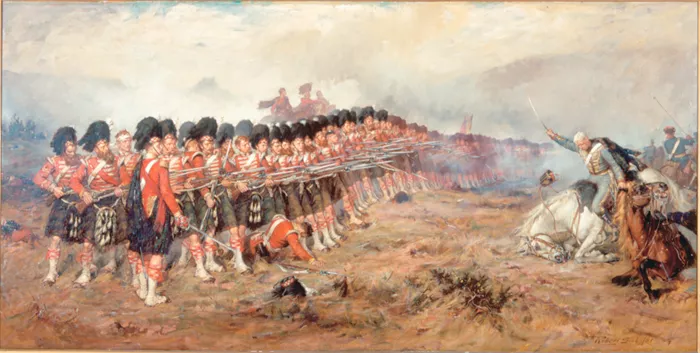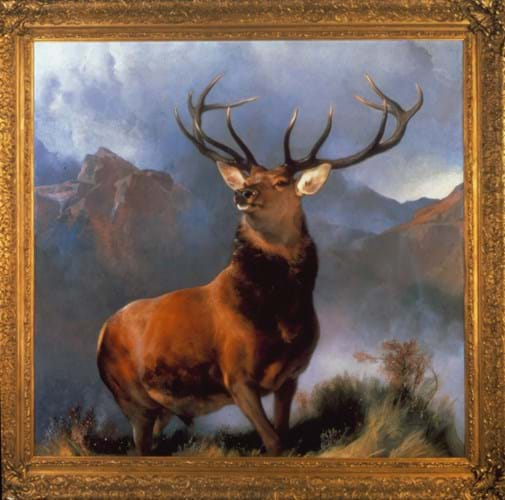Although painted by an English artist, the painting has become one of Scotland’s most popular and symbolic images. Having entered the public consciousness, the picture has featured as a logo for products as diverse as whisky, ale, butter, soup and insurance.
The oil painting from 1851 is making its fourth appearance at Christie’s and comes to auction a century after it last sold at the King Street rooms. It first appeared at auction in 1884 as part of the Earl of Londesborough collection, before remerging eight years later at the sale of Baron Cheylesmore’s estate.
At the latter auction, Monarch of the Glen fetched 6900 guineas (£7245), equivalent to a sum of £700,000 in today’s money.
The picture then reappeared yet again at Christie’s in 1916 but made the lesser sum of £5250. It was bought by Pears soap company for use in its advertising and was subsequently acquired by Scottish whisky producer Thomas Dewer who adopted the instantly-recognisable stag as the trademark for his distillery.
Corporate Vendors
The seller at Christie’s this time is the drinks conglomerate Diageo which purchased the Dewar’s business in 1997. Although it sold Dewar’s to Bacardi in 1997, Diageo kept the painting and loaned it to the National Museum of Scotland in Edinburgh where it has been on display for 17 years.
In a statement Diageo said it was selling the painting as it had “no direct link to our business or brands”.
"We have made a major contribution by loaning the work for the past 17 years, but we believe the time is right for us to pass on the ownership of the painting.”
Diageo recently lent Monarch of the Glen for the summer exhibition at Christie’s to mark the firm’s 250th anniversary. The exhibition displayed some of the greatest works that the auctioneers have sold in their long history.
If it sells at the auction on December 8, Monarch of the Glen will undoubtedly make a major record for Landseer. The current auction high for the artist stands at £1.15m for Scene in Chillingham Park, portrait of Lord Ossulston or death of the wild bull which sold at Christie's sale of the Forbes collection in 2003.
It remains unclear whether the National Museum of Scotland will bid on the picture but reports in the national media have focused on the concern that it might sell to an overseas buyer. Should a future buyer try to export the picture, it would inevitably be blocked from export and likely spark a campaign to ‘save’ it for the nation.
‘Royal’ Stag
The painting itself depicts a ‘Royal’ stag (identified by the 12 points on its antlers) proudly standing in a highland landscape believed to be in Glen Affric. It was painted in 1851 after Sir Edwin Landseer (1802-73) received a commission to paint three works for the refreshment rooms at the House of Lords. However, after the decoration scheme was revised, the works were instead sold to private collectors with Monarch of the Glen bought by the Earl of Londesborough.
Landseer was among the most popular artists of his generation – Queen Victoria was an admirer – and he spent a great deal of time in Scotland, shooting and hunting as well as painting. Inspired by the novels of Walter Scott, he spent several months each year walking in the Highlands and producing animal paintings which were in high demand in their day.
While the image has been derided as a ‘biscuit tin’ cliché, admirers of the painting point to how Landseer had effectively elevated animal painting to high art with this work.
At the same time as consigning the work to Christie’s, Diageo is donating another famous painting, The Thin Red Line by Robert Gibb, to the Scottish War Museum, where it is currently on loan.
The painting depicts the 93rd Highlanders halting a Russian cavalry charge at the Battle of Balaclava during the Crimean War in 1854.

‘The Thin Red Line’ by Robert Gibb which has been donated by drinks company Diageo to the Scottish War Museum.






